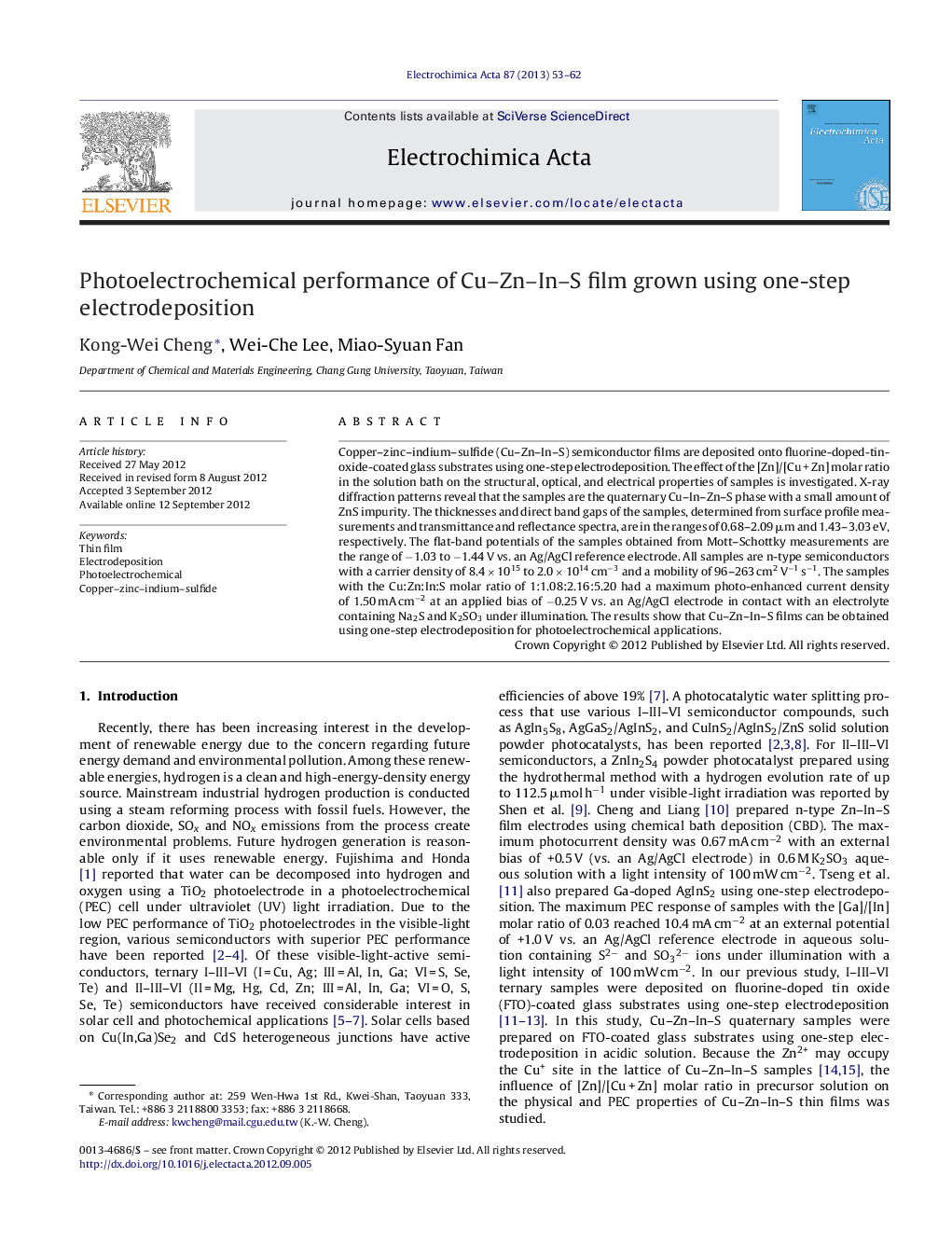| Article ID | Journal | Published Year | Pages | File Type |
|---|---|---|---|---|
| 187961 | Electrochimica Acta | 2013 | 10 Pages |
Copper–zinc–indium–sulfide (Cu–Zn–In–S) semiconductor films are deposited onto fluorine-doped-tin-oxide-coated glass substrates using one-step electrodeposition. The effect of the [Zn]/[Cu + Zn] molar ratio in the solution bath on the structural, optical, and electrical properties of samples is investigated. X-ray diffraction patterns reveal that the samples are the quaternary Cu–In–Zn–S phase with a small amount of ZnS impurity. The thicknesses and direct band gaps of the samples, determined from surface profile measurements and transmittance and reflectance spectra, are in the ranges of 0.68–2.09 μm and 1.43–3.03 eV, respectively. The flat-band potentials of the samples obtained from Mott–Schottky measurements are the range of −1.03 to −1.44 V vs. an Ag/AgCl reference electrode. All samples are n-type semiconductors with a carrier density of 8.4 × 1015 to 2.0 × 1014 cm−3 and a mobility of 96–263 cm2 V−1 s−1. The samples with the Cu:Zn:In:S molar ratio of 1:1.08:2.16:5.20 had a maximum photo-enhanced current density of 1.50 mA cm−2 at an applied bias of −0.25 V vs. an Ag/AgCl electrode in contact with an electrolyte containing Na2S and K2SO3 under illumination. The results show that Cu–Zn–In–S films can be obtained using one-step electrodeposition for photoelectrochemical applications.
► Cu–Zn–In–S photoelectrodes were deposited onto substrates using electrodepositon. ► Samples were n-type semiconductors with small amount of ZnS impurity. ► The optical energy band gaps of samples are in the ranges of 1.43–3.03 eV. ► Sample with [Zn]/[Cu + Zn] ratio of 0.52 has a maximum PEC response.
